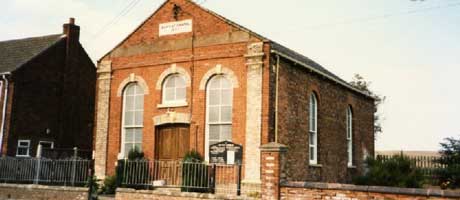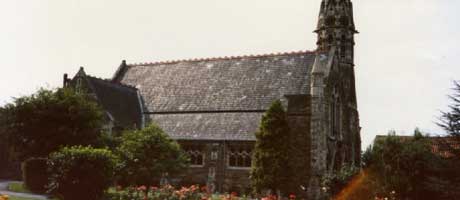Epworth (Epeurde)
Epworth, now the shopping centre of the southern part of the Isle of Axholme, has always been claimed by its inhabitants to be the capital of the Isle.
After the conquest, the Manor of Epworth was given to Geoffrey de Wirce. In the reign of Henry I, the Manor was given to Nigel d'Albini, bow-bearer to William Rufus. Nigel's son Roger, took the name of Mowbray, which was to be the name of the Lords of the Manor during the mediaeval period.
Much of the character of Epworth, with its strip farming in open fields, is a legacy of history. A grant of the Commons to the freeholders and other tenants made by deed of 1360 by John de Mowbray, Lord of the Manor, gave many privileges and freedoms which were long cherished and protected. The Deed was to cause repercussions in the reign of Charles I when Sir Cornelius Vermuyden a Dutch engineer was given the task of draining the Isle. Vermuyden's work was an outstanding piece of irrigation engineering. There has been extensive drainage since that time which together with warping has made this an exceptionally fertile area and Epworth shares in this productivity. An example of Dutch influence on local architecture can be seen in the building now used as the Post Office, situated in Epworth High Street.
The Parish Church, dedicated to St. Andrew, occupies a commanding position overlooking the town. Its architecture suggests that its oldest part was built in the late 12th century with later additions in the 14th and 15th centuries. The Reverend Samuel Wesley, its most famous clergyman, is buried in the Churchyard, just outside the south door of the chancel. Many of the Parish Registers were destroyed during the disastrous fire at the Rectory in 1709 with the exception of a General Register Dec. 1539 - Aug. 1601, a Burial Register 1538 - 1593 and a portion of a Marriage Register 1564 - 1592. Registers survive from 1710 and are now held at Lincolnshire Archives.
A stained glass window in the Church depicts the Commissioning of the Disciples and above is an excellent reproduction of the medallion of John and Charles Wesley from the memorial to the brothers in Westminster Abbey. In one of the transepts is a Memorial Tablet to John Wesley.
Also situated in the High Street, almost opposite the Wesley Memorial Church is the building, now used as a Youth Centre, previously the Methodist New Connexion or Kilham Memorial Chapel. Alexander Kilham was born in Epworth in 1762 and the entry of his baptism appears in the Epworth Church Register. He was the son of Simon Kilham a linen weaver of Epworth. He became a forceful writer and speaker and his main theme was in favour of greater lay representation in the government of the Church. His views were repudiated and he himself was tried and expelled by the Wesleyan Conference of 1796. In 1797, the Methodist New Connexion was founded with himself as secretary.
There was a school in Epworth in 1711 and in 1856 a Free School was set up with endowments. Epworth now has a new County Primary School replacing both the old County Primary School and the Church of England Primary School. The old County Primary School has now been converted to an inn and the Church of England Primary School buildings are now used as St. Andrew's Church Centre. The South Axholme Secondary School, opened in 1961 and situated on Burnham Road, serves the needs of pupils aged 11 to 16 years from Epworth and the southern part of the Isle.
Epworth has one of two Mechanics' Institutes in England still functioning for their original purpose and this holds a fine library. It is housed in a building erected in the Market Place in 1803. Also in the Market Place stands the Market Cross, from the steps of which John Wesley is said to have preached. The Market Place and adjacent areas have now been designated a 'conservation area'. The Epworth Society, a civic organisation, whose theme is preservation and improvement, also has premises in the Market Place and is the tourist information bureau.
Also situated in the High Street, almost opposite the Wesley Memorial Church is the building, now used as a Youth Centre, previously the Methodist New Connexion or Kilham Memorial Chapel. Alexander Kilham was born in Epworth in 1762 and the entry of his baptism appears in the Epworth Church Register. He was the son of Simon Kilham a linen weaver of Epworth. He became a forceful writer and speaker and his main theme was in favour of greater lay representation in the government of the Church. His views were repudiated and he himself was tried and expelled by the Wesleyan Conference of 1796. In 1797, the Methodist New Connexion was founded with himself as secretary.
There was a school in Epworth in 1711 and in 1856 a Free School was set up with endowments. Epworth now has a new County Primary School replacing both the old County Primary School and the Church of England Primary School. The old County Primary School has now been converted to an inn and the Church of England Primary School buildings are now used as St. Andrew's Church Centre. The South Axholme Secondary School, opened in 1961 and situated on Burnham Road, serves the needs of pupils aged 11 to 16 years from Epworth and the southern part of the Isle.
Previously two annual fairs were held in Epworth, one on the first Thursday after 1st May and the other the first Thursday after 29th September. Nowadays there are the annual Epworth Show held on two days over August Bank Holiday and the annual Festival of the Plough. This event, held during September, attracts enthusiasts from far and wide to watch demonstrations of ploughing using Shire horses, vintage tractors etc.
The Thurlow Playing Field situated in Station Road is also Epworth's War Memorial, but a Roll of Honour is kept in St. Andrew's Church.
Peck describes Epworth as a "market town, small, irregular with a neat market place approached by four streets" and but for the word "small", the description would hold good today, though cars in the narrow streets cause congestion at times. Epworth now to a large extent provides banking facilities and legal services for the area and has compact and comprehensive shopping facilities. There are ambulance, police and fire stations, a modern library and a leisure centre. There are also a number of public houses and restaurants to cater both for the many visitors who are attracted to Epworth and the local inhabitants. Some family names traditionally associated with Epworth include Coggan, Clark, Emerson, Gravil, Matthews, Oliver, Pilsworth, Selby, Shipley and Whitehead.
Epworth has an enduring fame however, as the birthplace of John and Charles Wesley, the founders of Methodism. The Old Rectory, a fine Queen Anne style building, rebuilt after the famous fire of 1709, has been completely restored and is now the property of the World Methodist Council. It is open to visitors every weekday 10.00 a.m. to 12 noon and 2.00 p.m. to 4.00 p.m. from March to October, and other times by arrangement.
The Wesley Memorial Church, situated in the High Street, is a very fine building and was erected in 1889, at a cost of £6500.


